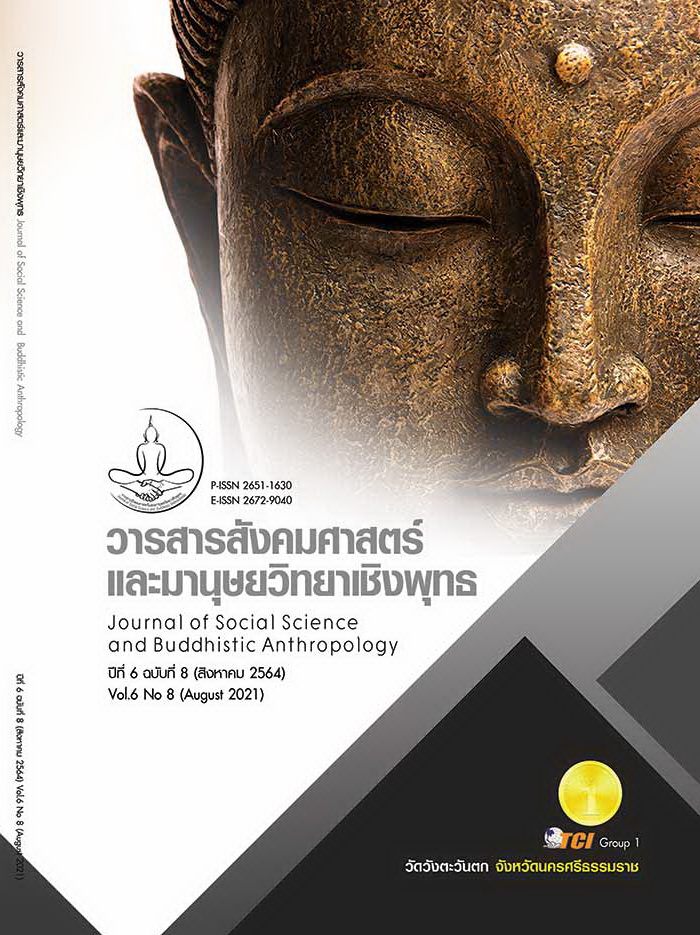INNOVATORSHIP ENHANCEMENT MODEL FOR UNDERGRADUATE PROGRAMS OF PRIVATE UNIVERSITIES IN THAILAND
Keywords:
Innovatorship, Innovation, Innovatorship Enhancement Model, Undergraduate ProgramAbstract
The objectives of this research article were to 1) study the conceptual framework of innovatorship promotion model in the production of graduates of private universities, 2) study the desirable conditions of innovatorship enhancement for the bachelor’s degree program of private universities in Thailand, and 3) develop the innovatorship enhancement model for the bachelor’s degree program of private universities in Thailand. This research is qualitative research by using in - depth interview from the key informants; moreover, the sample groups in this research are two private universities, and the key informants are the directors of the universities in the number of 10 persons. For the instruments used in this research, it includes the conceptual framework’s assessment form, interviewing form, and model’s assessment form; additionally, to analyse the data, the content analysis is used. As a result of this research, it is presented that firstly, the conceptual framework to enhance the innovatorship for the bachelor’s degree program of private universities included 4 aspects, named 1) academic affairs administration, 2) design thinking process, 3) innovative thinking, and 4) skills to seek and discover creative thinking. Secondly, the desirable conditions of innovatorship enhancement for the bachelor’s degree program of private universities in Thailand consisted of understanding problems, defining problems, formulating strategies for developing the most feasible innovations to solve the problems, experimenting, questioning, creating networks, observing, taking advantage of the platform to access information technology, as well as testing and choosing the proper problems which are agreeable with the capabilities. Lastly, the development of the innovatorship enhancement model for the bachelor’s degree program of private universities in Thailand consisted of 3 elements, including 1) input, which is the development of innovators’ goals, 2) process, which is the process that enhancing innovators, and 3) output, which is the performance of innovators.
References
กนกวรรณ ภู่ไหม. (2559). การศึกษาปัจจัยสนับสนุนการสร้างนวัตกรรมองค์กร บริบท ธนาคารพาณิชย์. ใน วิทยานิพนธ์วิทยาศาสตรมหาบัณฑิต สาขาวิชาการบริหารเทคโนโลยี. มหาวิทยาลัยธรรมศาสตร์.
กระทรวงศึกษาธิการ. (2559). การพัฒนานักศึกษาสู่ Thailand 4.0. เรียกใช้เมื่อ 20 มกราคม 2563 จาก https://www.moe.go.th/การพัฒนานักศึกษาสู่-thailand-4-0
นุชจรี กิจวรรณ. (2561). กระบวนการคิดเชิงออกแบบ: มุมมองใหม่ของระบบสุขภาพไทย. วารสารสภาการพยาบาล, 33(1), 5-14.
บุญเลิศ จันทร์ไสย. (2555). การจัดการความรู้ (KM) ประกันคุณภาพการศึกษา. เรียกใช้เมื่อ 15 สิงหาคม 2563 จาก http://boonlertqa.blogspot.com/
ไพฑูรย์ สินลารัตน์. (2553). ผู้นําเชิงสร้างสรรค์และผลิตภาพ: กระบวนทัศน์ใหม่และผู้นําใหม่. กรุงเทพมหานคร: โรงพิมพ์แห่งจุฬาลงกรณ์มหาวิทยาลัย.
มรรยาท รุจิวิชชญ์ และมารุต ปัชโชตะสิงห์. (2561). กลยุทธ์การบ่มเพาะนวัตกรรมในระดับอุดมศึกษา. เรียกใช้เมื่อ 10 กันยายน 2563 จาก https://www.matichon. co.th/education/news_894745
วสันต์ สุทธาวาศ และพิทักษ์ ศิริวงศ์. (2558). ความเป็นนวัตกรทางการศึกษาขั้นพื้นฐานในภาครัฐ: การศึกษาทฤษฎีฐานราก. Veridian E - Journal, Silpakorn University, 8(2), 748-767.
ศูนย์สร้างสรรค์งานออกแบบ (TCDC). (2560). Return happiness to patients using service design: the further steps of Bamrungraj International Hospital. เรียกใช้เมื่อ 11 สิงหาคม 2563 จาก http://www.tcdc.or.th/articles/others/21956/#Returnhappinesstopatientsusing-Service-De-sign--thefurtherstepsofBamrungrajInternationalHospital
ฝ่ายส่งเสริมวัฒนธรรมนวัตกรรม สำนักงานนวัตกรรมแห่งชาติ. (2553). การจัดการนวัตกรรมสำหรับผู้บริหาร. (พิมพ์ครั้งที่ 3). กรุงเทพมหานคร: สำนักงานนวัตกรรมแห่งชาติ.
Brown, T. (2008). Design Thinking in Harvard Business Review. Retrieved September 5, 2020, from from https://www.ideo.com/post/design-thinking-in-harvard-business-review
Cross, N. (2006). Designerly Ways of Knowing. London: Springer Verlag.
Kelley, D. (2004). The Power of Design in BusinessWeek. Retrieved September 5, 2020, from https://www.ideo.com/post/the-power-of-design-in-businessweek
Kylliäinen, J. (2019). Types of Innovation - The Ultimate Guide with Definitions and Examples. Retrieved January 5, 2020, from https://www.viima.com/blog/types-of-innovation
Martin, R. (2009). The Design of Business: Why Design Thinking is the Next Competitive Advantage. United States: Harvard Business Review Press.
Noweski, C. et. al. (2012). Towards a Paradigm Shift in Education Practice: Developing Twenty - first Century Skills with Design Thinking. New York: Springer Heidelberg.
Office of the Higher Education Commission. (2013). Thailand's Higher Education Strategy toPrepare for ASEAN Community in 2015. Bangkok: Bangkok Log PartLtd.
Saylor, J. G. et. al. (1981). Curriculum Planing for Better Teaching and Learning. New York: Holt Rinehart and Winston.








